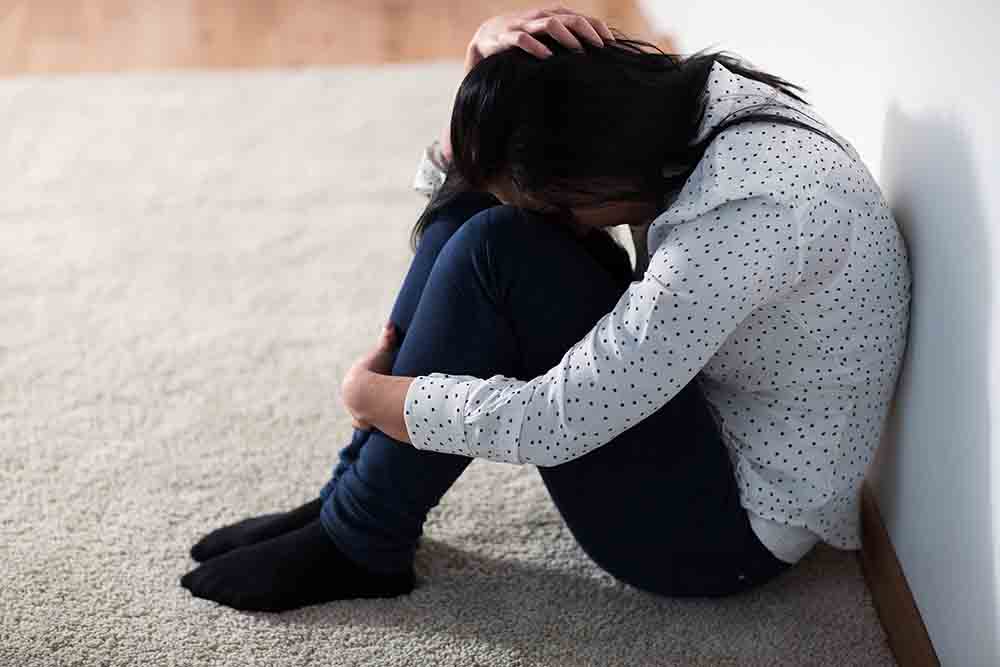Canada has some of the best systems and services for addressing gender-based violence. Police services have become increasingly responsive to the challenges of investigating violence against women, and both government and non-government organizations are widely committed to providing support to victims.
Despite these efforts the issue of abuse, the tragic consequences of abuse, and the challenges involved in the identification and prevention of violence against women persists. Too many Canadians remain unaware of the extent of gender-based violence in Canada, something most of us perceive as an issue of less morally advanced societies.
Gender-based violence has continued to damage the lives of too many young women in communities across Canada.
On Dec. 6, 1989 Marc Lepine, 25 years old, entered the corridors of Montreal’s École Polytechnique where he separated the men from the women before opening fire and killing 14 female engineering students as he uttered, “You’re all a bunch of feminists, and I hate feminists!”1
On April 23, 2018 Alek Minassian, 25 years old, drove a rented van onto one of Canada’s busiest streets intentionally targeting women. Minassian had posted a hostile message toward women on Facebook prior to his deadly rampage, that killed 10 and wounded 16.
Cases like these are extreme and rare, however, they are indicative of a much deeper and widespread reality of violence against women.
Responding effectively to gender-based violence requires widespread acknowledgement of the challenge, general commitment for appropriate legislation, laws, and support services; but most importantly, modifications of social attitudes, especially of young boys and men.
The General Social Survey (GSS)2 and the Uniform Crime Reports (UCR)3 are two primary sources for victimization data in Canada. The GSS and the UCR provide a general and widespread perspective of gender-based crimes. The facts are alarming, but more than numbers they represent the lasting damage to the lives of too many young women and their families across Canada. The extent of the violence should be a powerful call for action by all Canadians. Here are some facts.
According to the 2018 UCR, there were more than 28,700 police-reported sexual assaults, or 78 incidents per 100,000 population; a 15% increase in police-reported sexual assaults in 2018 following a 13% increase in 2017, and the fourth consecutive increase dating back to 2015. 4
The last available GSS on self-reported sexual assault in Canada reveals that there were 22 incidents of sexual assault for every 1,000 Canadians aged 15 and older in 2014; representing approximately 636,000 self-reported incidents of sexual assault.
The two surveys are conducted on very different principles and present starkly different results: 78 incidents per 100,000 (UCR) compared to 22 incidents of sexual assault for every 1,000 (GSS) or 2,200 per 100,000.5
The discrepancy between the UCR and GSS confirms that sexual assault remains one of the most underreported crimes, both providing alarming concerns about underreporting.
Women and men provided similar reasons for not reporting incidents of sexual assault to the police – a belief amongst victims that the crime was minor and not worth the time to report, shame, guilt and stigma of sexual victimization, the normalization of inappropriate or unwanted sexual behaviour, and the perception that sexual violence does not warrant reporting.
Sexual assault offenders were most often men, acting alone. For about two-thirds of incidents (68%), someone under the age of 35 was identified as the offender. More specifically, 31% of offenders were between the ages of 18 and 24, while 27% were between the ages of 25 and 34, and 10% were under the age of 18. 6
Clearly there is much work to be done towards ensuring that victims of sexual harassment and violence come forward and engage the system against their offenders, and that authorities – police, prosecutors, judges, and those entrusted with the custodianship of young persons are informed and committed to ensuring that investigations and prosecutions will be conducted with sensitivity, and sentencing will be consistent with the principles of specific and general deterrence.
Sexual abuse requires a complicated and sensitive investigative and prosecutorial process. And while sexual assault may be one of the most damaging and lasting crimes committed against a person, at present the arrest and charges results in relatively few successful convictions. According to the 2014 GSS 83% of sexual assaults are not reported to the police. The proportion of the total number of all sexual assaults reported to police that were cleared by charge was constant from 1998 to 2015, varying from 41% to 46%.7
Even where suspects are arrested and charged too few are convicted. “Too few survivors feel confident coming forward and of those who do, only a small fraction result in a conviction” This according to The Honourable Maryam Monsef, the Minister for Women and Gender Equality and Rural Economic Development.8
Fewer than half of sexual assault cases adult criminal courts result in a guilty plea. For the 2016/2017 fiscal year, 42% of all sexual assault case decisions in adult criminal court resulted in a finding of guilt. For the same period, 59% of accused found guilty were ordered a custodial sentence and 19% were ordered probation as the most serious sentence.9
Canadian colleges and universities are not immune to the epidemic of gender-based violence. Post-secondary institutions are reporting significant numbers of cases of sexual harassment, sexual abuse, and gender-based violence on campuses across Canada is an even more concerning indicator of the challenge.
In a 2019 study reported in the Canadian Journal for Higher Education 3,400 (36.9%) of participants at the Université du Québec à Montréal had been sexually assaulted by someone linked to the university, with 42% of those being victimized more than once.10
In a study conducted between February 16, 2018 and April 2, 2018, by CCI Research Inc., administered on behalf of Ontario’s Ministry of Training, Colleges and Universities, 63% of 116,000 university students who completed the survey reported having experienced some type of sexual harassment, 49.6% of 42,000 college students who participated reported the same, as did 29.6% of 4,098 students at private career colleges. 11
Although the survey was limited to post-secondary institutions in Ontario, the results are not inconsistent with findings of GSS and UCR and indicative of the pervasiveness of the challenge.
As communities continue to struggle with the issues of sexism, misogyny, and violence, governments across Canada have also undertaken important steps to mitigate harm, raise awareness, and provide protection to victims. Reforms of sexual offence legislation in Canada have included for instance:12
- In 1988 the enactment of child-specific sexual offences, offences include, but not limited to sexual interference, invitation to sexual touching and sexual exploitation
- In 1992 the Supreme Court ruling that the 1983 ‘rape-shield’ provisions were unconstitutional, and the amended to create two distinct rules: one that categorically excludes all evidence of a victim’s prior sexual activity used to suggest that the victim should not be believed or that sexual activity was consensual, and reforms to included a clear definition of consent and limitations on the accused’s ability to advance a mistaken belief in consent
- In 1997 the provision to prevent the accused from seeking private records to undermine the victim’s credibility
In 2016, Manitoba became the first province to ensure job-protected leave for domestic violence survivors, providing them with greater social support and increased job security. Alberta and Saskatchewan, as well as the federal government, now provide a set number of days of unpaid leave for domestic violence survivors. Ontario, Manitoba, Quebec, Nova Scotia, New Brunswick, Newfoundland and Labrador, and Prince Edward Island provide a set number of days for paid leave. 13
Manitoba was also amongst the first provinces, along with British Columbia and Ontario, to introduce legislation requiring all post-secondary institutions to institute a sexual assault policy. 14
Status of Women Canada is a federal department that works to advance equality for women by focusing its efforts in three priority areas: increasing women’s economic security and prosperity; encouraging women’s leadership and democratic participation, and ending gender-based violence. The federal government has provided an $86 million over five years starting in 2018-19 and $20.0 million per year ongoing, to expand a strategy that focuses on: 15
- Preventing teen dating violence;
- Enhancing and developing preventative bullying and cyberbullying initiatives;
- Equipping health professionals to provide appropriate care to victims;
- Expanding the Gender-Based Violence Program so that more organizations, such as rape crisis centres, are better able to help population groups who are at the highest risk of experiencing violence;
- Providing support to sexual assault centres;
- Expand the RCMP sexual assault review and support training and awareness of officers, and
- Establish a National Framework to Address Gender-based Violence in Post-Secondary Institutions.
In 2019 the federal government’s established The Advisory Committee on the Framework to Prevent and Address Gender-Based Violence at Post-Secondary Institutions, a commitment to working with stakeholders, including provincial and territorial governments, to develop a framework to prevent and address gender-based violence at post-secondary institutions. 16
And on February 4, 2020 the Minister of Justice and Attorney General of Canada, introduced An Act to amend the Judges Act and the Criminal Code, to ensure that all newly appointed provincial superior court judges undergo training in sexual assault law and social context. The Bill is aimed at enhancing public confidence and sexual assault survivors’ confidence in the criminal justice system. The goal is to ensure judges hearing sexual assault matters will have the necessary training to fairly and properly decide matters, without the influence of myths and stereotypes. The Bill also proposes to enhance the transparency of decisions by requiring judges to provide written reasons, or to enter them into the record, when deciding sexual assault matters.17
Clearly, the issue is enormous and the current state of sexual violence is a tragic indictment on our society, with potentially significant impact on quality of life, productivity, and loss of economic potential.
The challenge is even bleaker within First Nations communities.
On June 3, 2019 The National Inquiry into Missing and Murdered Indigenous Women and Girls called for transformative legal and social changes to resolve the crisis that has devastated Indigenous communities across the country. Chief Commissioner Marion Buller noting that “the hard truth is that we live in a country whose laws and institutions perpetuate violations of fundamental rights, amounting to a genocide against Indigenous women, girls, and 2SLGBTQQIA people.” 18
The Commission’s work amongst its other many important findings highlighted that Indigenous women and girls are 12 times more likely to be murdered or missing than any other women in Canada. 19
Laws alone cannot stem gender-based violence; there also needs to be a cultural change in how men perceive their roles in relationships, and how society treats those who perpetuate violence against women.
Focusing solely on legislation and laws cannot solve issues of gender-based violence. Laws and legislation are intended to influence behaviour and hold accused accountable.
Laws, in part, serve as deterrence and reassurance of community norms, but laws and legislation have so far failed to promote the reporting of victimization. Victims of gender-based violence have yet to feel sufficiently empowered to engage the criminal justice system. The current lack of reporting of sexual violence represents a significant gap in gender equality and the legitimacy of our criminal justice system.
While much is and must still be done to respond to gender-based violence, there must also be a cultural change that diminishes the need for such responses in the first place. If we are unable to impart an understanding of the basics of respect and importance of consent to our young men before they enter high school and post-secondary institutions then we have an even more serious problem on our hands.
[show_more more=”SeeEndnotes” less=”Close Endnotes”]
Endnotes
- ‘The Montreal Massacre: Canada’s feminists remember’. The Guardian, Julie Bindel, December 3, 2012, https://www.theguardian.com/world/2012/dec/03/montreal-massacre-canadas-feminists-remember, Accessed: February 13, 2020
- The main objective of the GSS on Canadians’ Safety is to better understand how Canadians perceive crime and the justice system and to capture information on their experiences of victimization. This survey is the only national survey of self-reported victimization and is collected in all provinces and territories. The survey allows for estimates of the numbers and characteristics of victims and criminal incidents. As not all crimes are reported to the police, the survey provides an important complement to officially recorded crime rates. It measures both crime incidents that come to the attention of the police and those that are unreported. It also helps to understand the reasons behind whether or not people report a crime to the police. Statistics Canada, https://www23.statcan.gc.ca/imdb/p2SV.pl?Function=getSurvey&SDDS=4504, Accessed February 13, 2020
- The Uniform Crime Reporting Survey was designed to measure the incidence of crime in Canadian society and its characteristics. The Canadian Centre for Justice Statistics (CCJS), in co-operation with the policing community, collects police-reported crime statistics through the Uniform Crime Reporting Survey (UCR). The UCR Survey was designed to measure the incidence of crime in Canadian society and its characteristics. Statistics Canada, https://www23.statcan.gc.ca/imdb/p2SV.pl?Function=getSurvey&SDDS=3302, Accessed February 13, 2020
- Canadian Centre for Justice Statistics. “Police-reported crime statistics in Canada 2018”, https://www150.statcan.gc.ca/n1/en/pub/85-002-x/2019001/article/00013-eng.pdf?st=9syuRqNK, Accessed February 13, 2020
- Shana Conroy and Adam Cotter. Statistics Canada, “Self-reported sexual assault in Canada, 2014”, July 11, 2017, https://www150.statcan.gc.ca/n1/pub/85-002-x/2017001/article/14842-eng.htm, Accessed: February 13, 2020
- Ibid
- Research and Statistics Division, Department of Justice Canada, “Just the Facts, Sexual Assaults, April 2019”, https://www.justice.gc.ca/eng/rp-pr/jr/jf-pf/2019/docs/apr01.pdf , Accessed: February 16, 2020
- Government of Canada, Department of Justice, “Government of Canada introduces legislation to ensure judges participate in training on sexual assault law and social context”, February 4, 2020, https://www.canada.ca/en/department-justice/news/2020/02/government-of-canada-introduces-legislation-to-ensure-judges-participate-in-training-on-sexual-assault-law-and-social-context.html, Accessed: February 13, 2020
- Ibid
- Magnussen, J. & Shankar, I. (2019). ‘Where is it? Examining Post-Secondary Students’ Accessibility to Policies and Resources on Sexual Violence’. Canadian Journal of Higher Education / Revue canadienne d’enseignement supérieur, 49 (2), 90–108. https://doi.org/10.7202/1063781ar, Accessed: February 14, 2020
- CCI Research Inc., Ministry of Training, Colleges and Universities of the government of Ontario, “Summary Report of the Student Voices on Sexual Violence Survey”, March 19, 2019, https://news.ontario.ca/maesd/en/2019/3/student-voices-on-sexual-violence-survey.html Accessed February 13, 2020
- Shana Conroy and Adam Cotter. Statistics Canada, “Self-reported sexual assault in Canada, 2014”, July 11, 2017, https://www150.statcan.gc.ca/n1/pub/85-002-x/2017001/article/14842-eng.htm, Accessed: February 13, 2020
-
Government of Manitoba, “Domestic Violence Leave”, https://www.gov.mb.ca/labour/standards/doc,domestic_violence_leave,factsheet.html, Accessed: February 16, 2020
-
Jacey Magnussen and Irene Shankar, Canadian Journal of Higher Education Revue canadienne d’enseignement supérieur, “Where is it? Examining Post-Secondary Students’ Accessibility to Policies and Resources on Sexual Violence”, Volume 49, Number 2, 2019, http://journals.sfu.ca/cjhe/index.php/cjhe/article/view/188203, Accessed: February 13, 2020
-
Government of Canada, Status of Women Canada, “Strategy to Prevent and Address Gender-Based Violence”; https://cfc-swc.gc.ca/violence/strategy-strategie/index-en.html, Accessed: February 13, 2020
- Government of Canada. “The Advisory Committee on the Framework to Prevent and Address Gender-Based Violence at Post-Secondary Institutions”, https://www.canada.ca/en/status-women/news/2019/01/the-advisory-committee-on-the-framework-to-prevent-and-address-gender-based-violence-at-post-secondary-institutions.html, January 16, 2019 Accessed: February 13, 2020
-
Government of Canada. “Government of Canada introduces legislation to ensure judges participate in training on sexual assault law and social context”, February 14, 2020, https://www.canada.ca/en/department-justice/news/2020/02/government-of-canada-introduces-legislation-to-ensure-judges-participate-in-training-on-sexual-assault-law-and-social-context.html, Accessed: February 13, 2020
-
National Inquiry Into Missing and Murdered Indigenous, “Women and Girls, the Reclaiming Power and Place: The Final Report of the National Inquiry into Missing and Murdered Indigenous Women and Girls”, Volume 1a, June, 2019, https://www.mmiwg-ffada.ca/wp-content/uploads/2019/06/Final_Report_Vol_1a-1.pdf Accessed: February 16, 2020
-
Ibid
[/show_more]
Anil Anand is a Research Associate with the Frontier Centre for Public Policy. Anil served as a police officer for 29 years; during his career some of his assignments included divisional officer, undercover narcotics officer, and intelligence officer. He has worked in Professional Standards, Business Intelligence, Corporate Communications, the Ipperwash Inquiry (judicial public inquiry), and Interpol.



